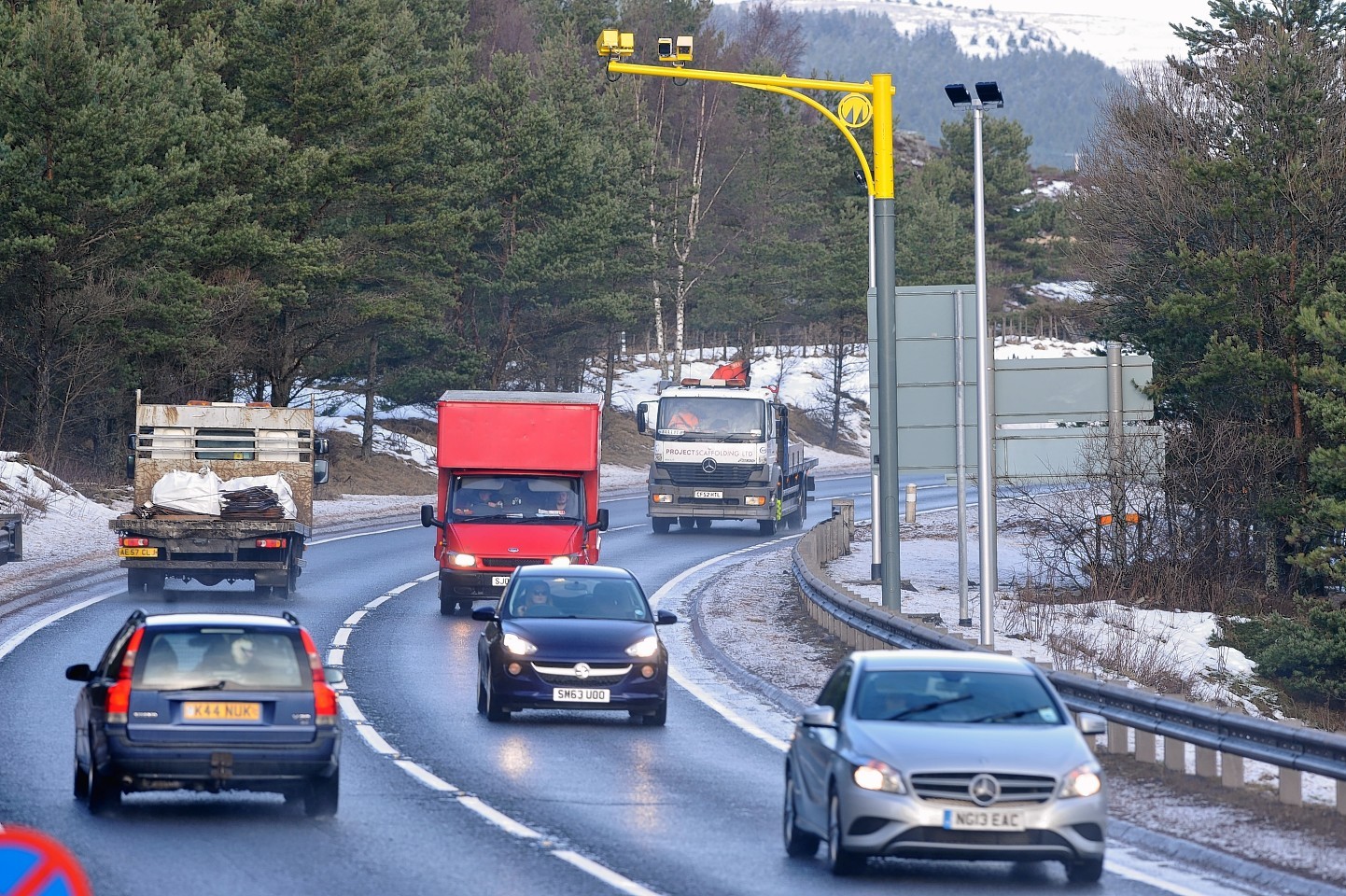The number of drivers caught speeding on the A9 has fallen dramatically since the arrival of controversial average speed cameras.
New figures released yesterday by Transport Scotland showed 298 offenders were the subject of “further action” by police in the past three months – compared to 2,493 in the same period the previous year.
Overall incidents of speeding have been slashed from one in three drivers last year to just one in 20 since the cameras were switched on in October.
And examples of excessive speeding – more than 10mph over limit – fell by 97%.
The level represents a drop from one in every 10 vehicles to one in every 250.
Journey times on the road for most motorists did increase as speeds dropped. Motorists reported northbound trips between Perth and Inverness were taking about 11 minutes longer year-on-year in January.
However, roads officials said journey time reliability had improved and hauliers were reporting a significant reduction in journey times for heavy goods vehicles since they were permitted to travel at 50mph, rather than the previous 40mph.
The A9 Safety Group, which includes representatives from motoring organisations, police and Transport Scotland, said the low number of offenders suggested a marked improvement in driver behaviour.
Chairman Stewart Leggett, said: “All the early findings on speed, journey time and journey time reliability are in line with our predictions, while traffic volumes on the A9 are remaining higher than in 2013, with no evidence of drivers diverting onto other routes.
“The low number of drivers being detected by the cameras and the speed profiles from along the route indicates the early effectiveness of the cameras in improving behaviour, but the A9 would be safer still if every driver observed the limits.”
Chief Superintendent Iain Murray, head of road policing said: “In the first three months of operation we have seen a more than eight-fold decrease in the number of people caught speeding on this stretch of road compared with the same time last year when there were 2,493 offences recorded.
“It is clear that the cameras are changing driver behaviour in the way that we expected. This will undoubtedly help to make the A9 safer for all road users.”
Campaigners who have fought vociferously against the introduction of the cameras were less impressed last night.
Highland MP Danny Alexander, a longtime critic of the scheme, said that the Scottish Government should focus on dualling the road while the Scottish Council for Development and Industry raised concerns about the longer journey time and warned it could have a “negative impact on the north’s economy”.
However, motoring organisations welcomed the results of the cameras report.
Institute of Advanced Motoring director of policy and research, Neil Greig said: “We are pleased that early indications suggest that average speed cameras on the A9 are meeting all of their safety objectives.
“Fewer deaths and injuries will be the ultimate measure and it’s still too early to be absolutely certain, but the trends are all positive.
“In the meantime it’s clear that the cameras have had an immediate and almost total effect on excessive speeding and it’s hard to think of any other measure that could have delivered such a result so quickly.”
Martin Reid of the Road Haulage Association added: “One of our members carried out an experiment by driving the A9 the day before the camera trial began then replicating the journey after the trial started.
“Journey times from Perth to Inverness and back were reduced substantially at 50mph, even with the addition of the speed cameras – with only an additional 0.5 litre of diesel used.
“Our members reported the journey was far less stressful because there was a marked reduction in the need for any vehicle to overtake.
Seven sections of the route between Perth and Inverness – all 60mph stretches – are covered by the so-called “yellow vultures” but it was confirmed yesterday that they are not all “live” at the same time.
The A9 Safety Group said the cameras were working as planned, apart from a glitch gathering data this month after heavy snow covered the solar panels used to power traffic counters.
The report does not give casualty figures due to the established process of recording these taking up to nine months to complete.
